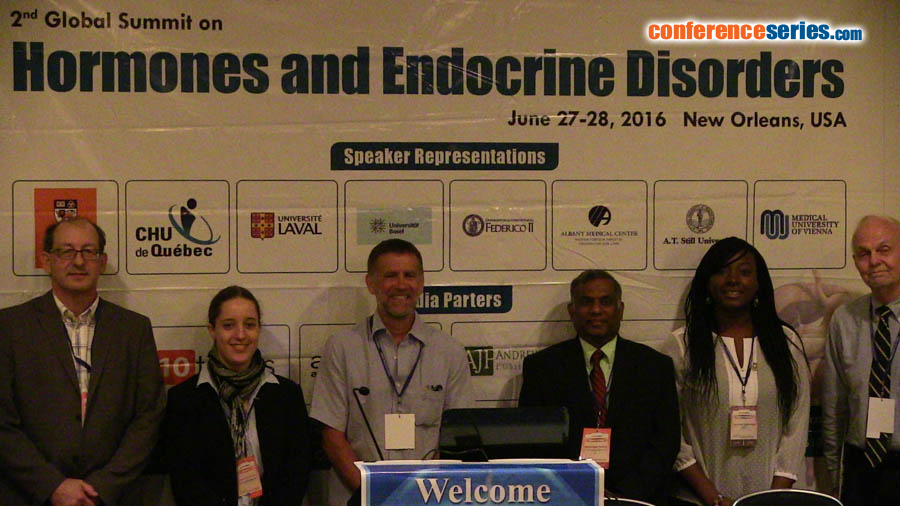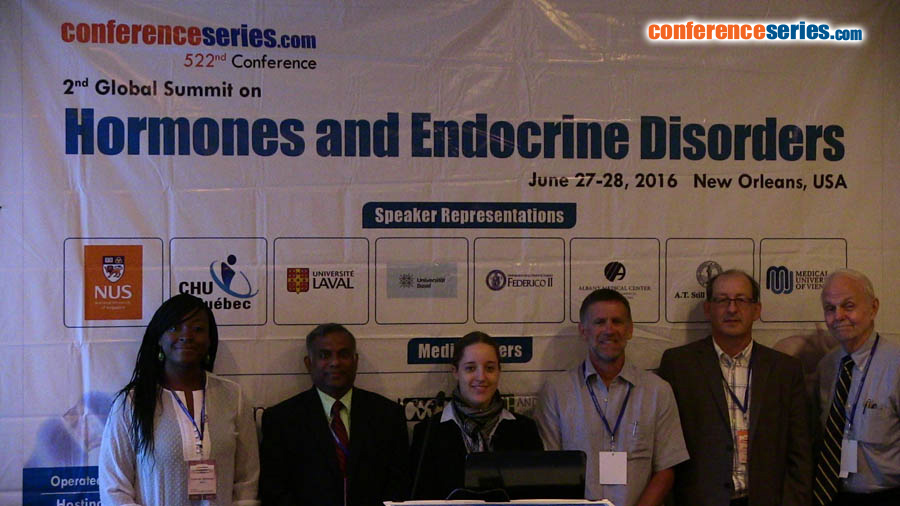
Paul J Davis
Albany Medical College, USA
Title: Modulation of angiogenesis and anti-angiogenesis at targets on integrin ï¡vï¢3
Biography
Biography: Paul J Davis
Abstract
Plasma membrane integrin avb3 is extensively involved in angiogenesis. Generously expressed on dividing endothelial cells and tumor cells, avb3 mediates cell-cell interactions and interactions with angiogenesis-relevant extracellular matrix (ECM) proteins such as osteopontin, vitronectin and von Willebrand factor. avb3 also engages in crosstalk with adjacent vascular growth factor receptors. We have described small molecule ligands of the integrin, such as thyroid hormone, that exert extensive control over blood vessel formation. Acting at the integrin, L-thyroxine (T4) (< 10-10 M free hormone) and 3,3’,5-triiodo-L-thyronine (T3) rapidly stimulate angiogenesis in the chick chorioallantoic membrane (CAM) model and Matrigel® microtubule formation system. Nanoparticulate T4 (agarose-T4) does not gain access to the cell interior and is equipotent angiogenically to unmodified T4. T4 is equipotent to VEGF and bFGF in the CAM model. The hormone receptor on avb3 mediates upregulation by T4 of a set of genes relevant to angiogenesis, including basic fibroblast growth factor (bFGF; FGF2) and several matrix metalloproteinases (MMPs). T4 also supports endothelial cell migration towards a vitronectin cue. Tetraiodothyroacetic acid (tetrac), a deaminated derivative of T4, inhibits binding of T4 and T3 to avb3 and, unmodified or reformulated as a poly(lactic-co-glycolic acid) nanoparticle (Nanotetrac; Nano-diamino-tetrac; NDAT), this agent antagonizes all of the pro-angiogenic actions of T4 and T3. Nanotetrac is anti-angiogenic by additional mechanisms unrelated to the binding of T4 and T3. These avb3-dependent actions include inhibition of the angiogenic actions of VEGF, bFGF and PDGF—reflecting, we propose, disruption of crosstalk between the integrin and nearby receptors for vascular growth factors—and stimulation of expression of the anti-angiogenic thrombospondin 1 (TSP1) gene in tumor cells. Also relevant to angiogenesis are the actions of Nanotetrac to decrease expression of VEGFA, EGFR, MMP-2, MMP-9 genes and miR-21 abundance. The microRNA increases cellular HIF-1a and VEGF content. Finally, resveratrol and testosterone are other small molecule ligands of avb3 that modulate angiogenesis. The pro-angiogenic action of resveratrol has been shown to be expressed via the avb3 receptor site for stilbenes, but the possibility that the dihydrotestosterone effect on HIF-1a is avb3-requiring has not yet been examined. In summary, integrin avb3 has small molecule ligands that regulate angiogenesis. A set of disparate thyroid hormone analogues is the best studied of such ligands and by multiple molecular mechanisms these analogues are pro- or anti-angiogenic.
Speaker Presentations
Speaker PPTs Click Here





